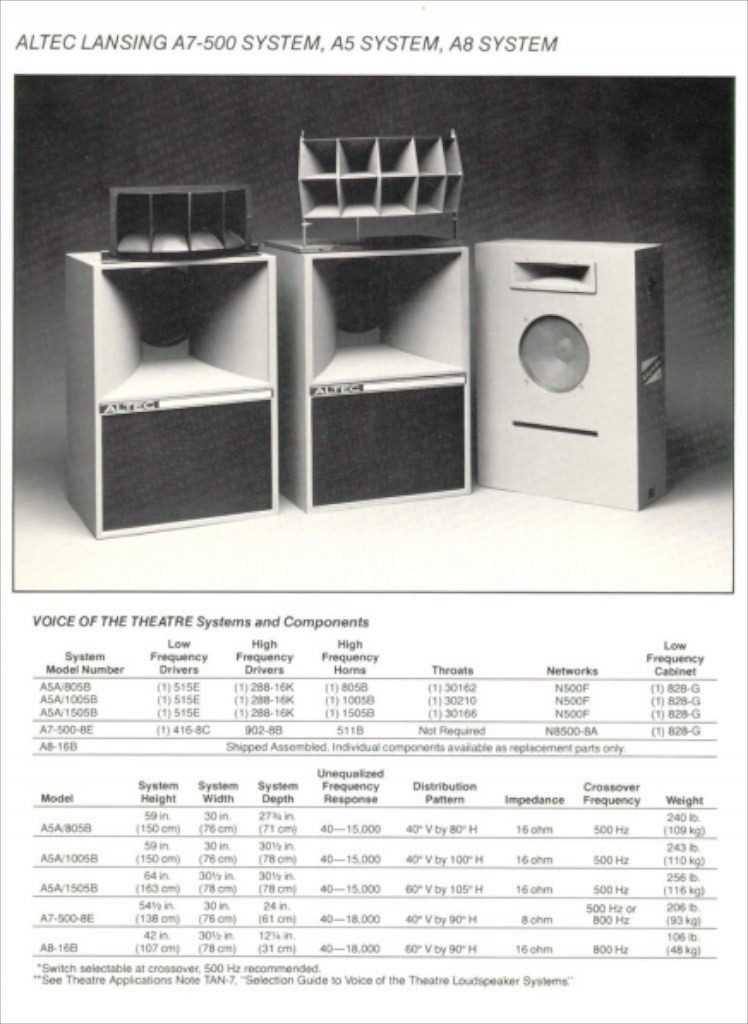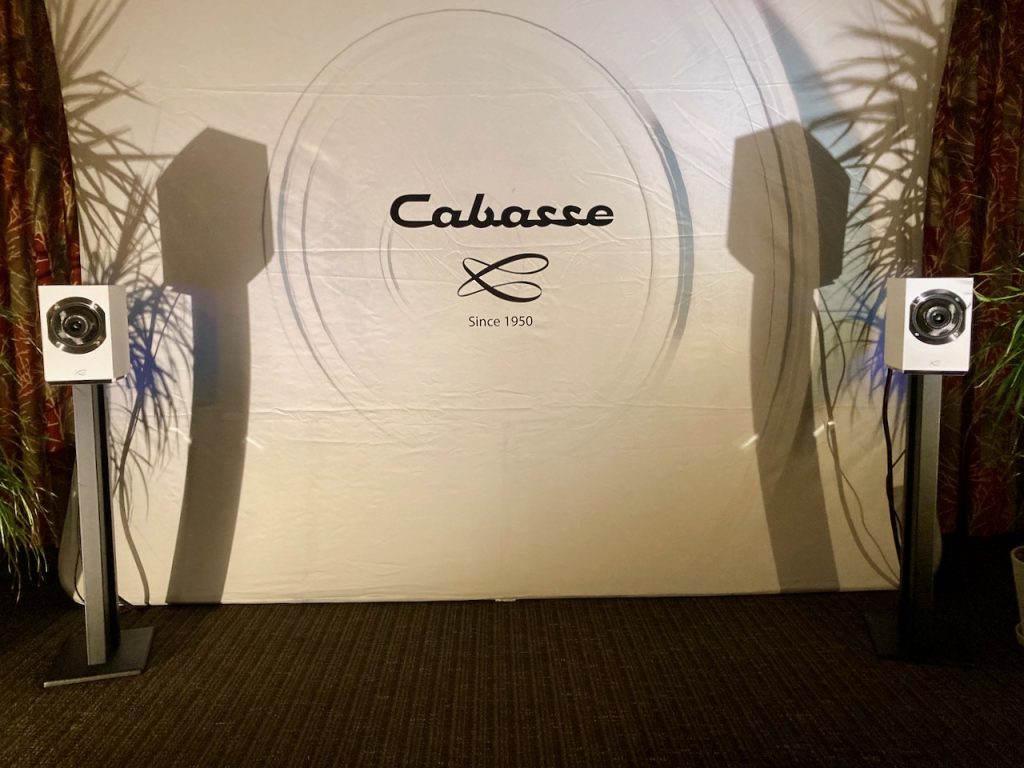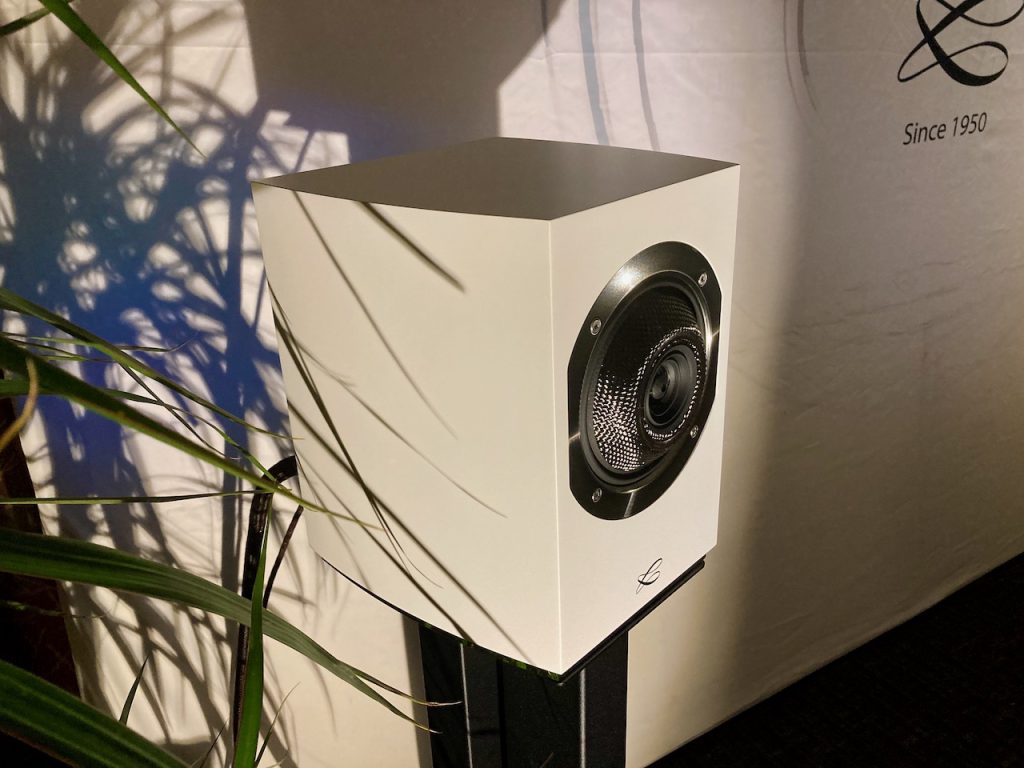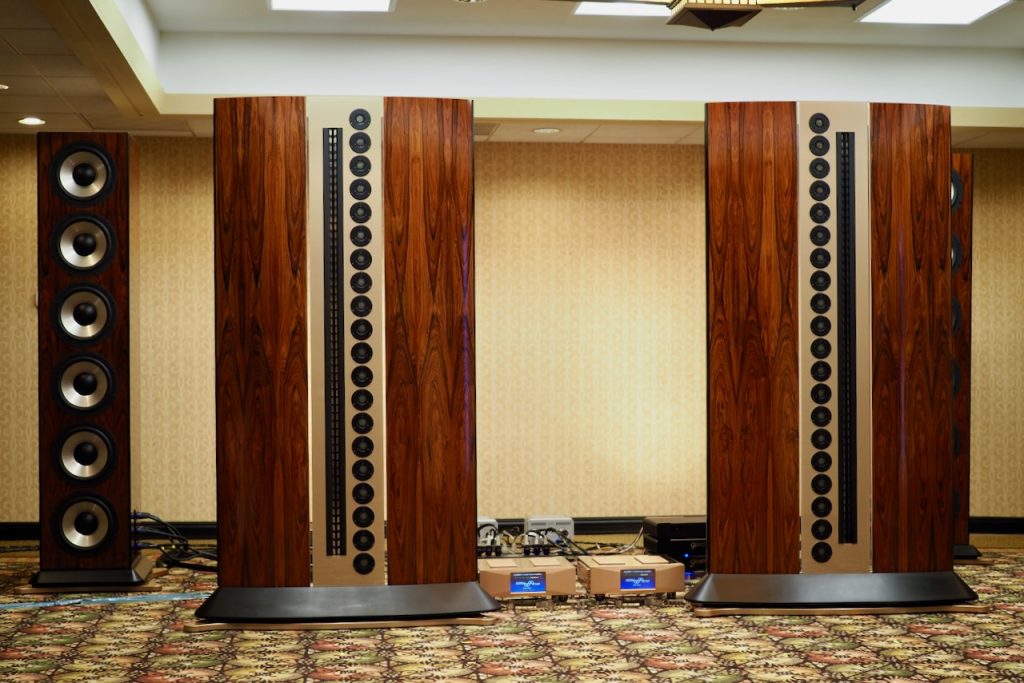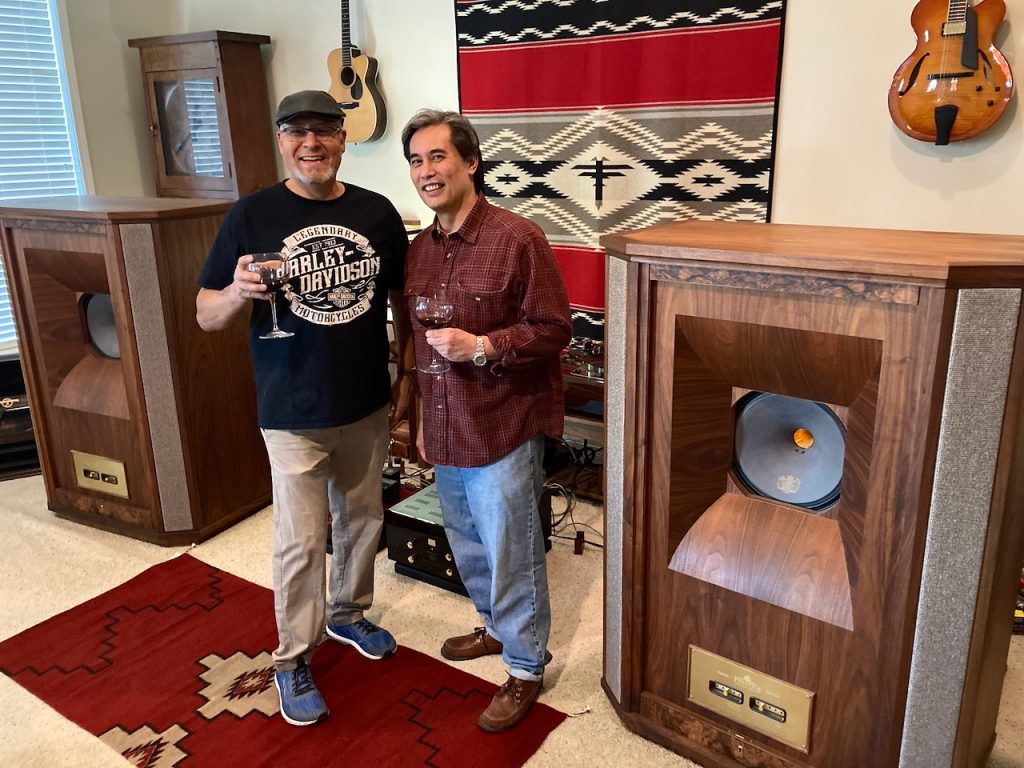Greetings friends, I hope you are doing well!
Audio has many facets, and as such context in audio is important. If you just grab snippets of audio writer’s articles out of context, and then try to apply them to a different context, chances are you’ll be confused.
Recording engineers see audio through one knothole. Audiophiles see audio through a different knothole. The DIY crowd sees audio through a different knothole. People who just love listening to music see audio through yet another knothole. Some younger people want to use their iPhone as a source component, instead of a turntable or CD player, and that knothole also presents a different view of the audio world.
Recently a reader contacted me who was confused about the relationship between differing approaches to loudspeaker design, loudspeaker placement, and various aspects related to equalization used in the recording & audio arts, that I had mentioned in various Jeff’s Place and Positive Feedback articles. It can be confusing.
To complicate things further, musicians, recording engineers, audiophiles, music lovers, other audio hobbyists, etc., tend to use differing vocabularies to describe the performance attributes they find to be important for their preferences and applications. Some are concerned primarily with measurable parameters. Others are more concerned with their subjective impressions.
One might end up not knowing what they think they know when the context shifts.
As just one example, there are multiple approaches to equalization, voicing, design - whatever you would like to call it - techniques used in the recording & audio arts, and they can refer to different applications and topics.
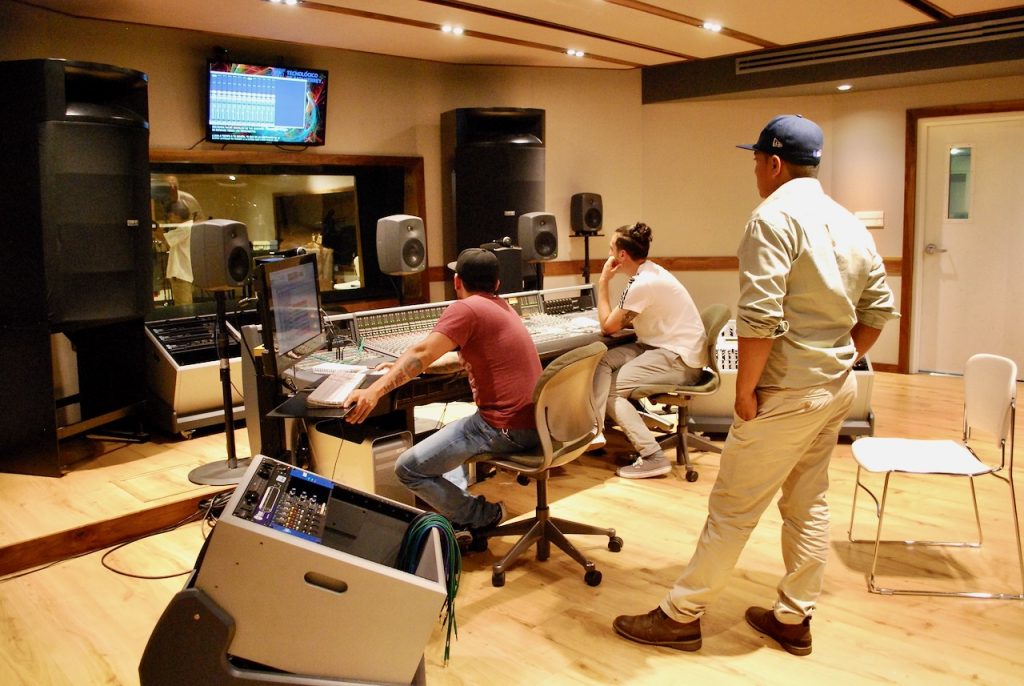
Control booth at the studios of Tec de Monterrey, Campus Ciudad de Mexico. Shared in accordance with the Wikimedia Creative Commons Attribution-Share Alike 4.0 International.
Perhaps we are talking about the equalization techniques used in contemporary recording arts, in the recording / mixing / mastering of an album. That’s one topic. Or perhaps we are looking at optimizing the balance of a particular audio system for a given listener’s room. That’s another topic. Or maybe we are looking at correcting issues with recordings that emphasize / de-emphasize one of the seven frequency bands of the audio spectrum so they will play back in our home audio system in a more satisfying way. Those are all different topics.
One topic. In contemporary recording arts during the recording / mixing / mastering phases there are different considerations involved in equalization with the goal to get - hopefully - well-balanced final consumer products, the albums you are listening to in your home.
Helpful concepts of what are involved in this equalization balancing act are described at the excellent Teach Me Audio website. Those concepts are well worth becoming familiar with and will help one to better understand what they are hearing when listening to recordings, why recordings can differ from each other in fidelity, and how those recordings relate to audio system performance: https://www.teachmeaudio.com/
Another topic. Loudspeaker designs are not all the same in their end use goals, and they can have different performance goals. This needs to be taken into consideration for whatever the application is to realize optimum performance.
Over the span of time the recording & audio arts have existed, there has been a lot of diversity in loudspeaker designs, in order to meet the needs of different types of applications in different market sectors.
In early audio times, with the Altec Voice of the Theatre loudspeakers that were intended for sound reenforcement applications, they had adjustable crossovers that helped one to balance the output of the high/midrange-frequency compression driver to the low-frequency driver for different rooms and applications.
I have a lovely pair of vintage Altec Voice of the Theatre loudspeakers that I enjoy using in my audio-visual system, but it takes a fair amount of work on the crossovers to get them to work in a domestic environment.
Today in the digital era, for example, Cabasse’s Rialto system, employs powerful DSP techniques to optimize the performance of their loudspeakers / audio system for a given room.
Some loudspeakers are designed to be monitors for professional studio or sound reenforcement applications. Some loudspeakers are designed / voiced for room boundary positioning (e.g. room corners). Some loudspeakers are designed for audiophiles who want to focus on emphasizing the recording quality of the highest-fidelity recordings of the stereo magnetic era.
Some listeners may want audiophile-style loudspeakers that are designed / voiced to perform at their optimum positioned well out into a room, so that they emphasize the visuospatial performance aspects of the best stereo magnetic era recordings. They might use a modified rule of thirds / fifths room positioning methodology, for example, to achieve that goal.
I've found audiophile focused loudspeakers / systems can be challenging to optimize in any given room, but there is an excellent guide to getting this sort of system sorted out and optimized, by Jim Smith, titled Get Better Sound: https://www.getbettersound.com/
Other listeners might want loudspeakers (and audio systems) that have a broader performance envelope, one that allows them to listen to the entire recorded music canon across the acoustic, electric, monaural magnetic, stereo magnetic, and digital eras of recording, in the highest fidelity possible.
This sort of listener might be the sort of person who reads Gramophone (established in 1923), for example, and is interested in listening to the greatest recorded musical performances documented since the advent of the recording arts.
A broader performance envelope emphasis tends to be more about enjoying the thrills of musical performances, in the highest fidelity possible, rather than being focused on the thrills related to recording quality and visuospatial performance of stereo magnetic era recordings, like you find in some audiophile designs.
Room boundary positioning of loudspeakers. Audio Note (UK) loudspeakers, Klipsch Klipschorns, vintage Altec Corona loudspeakers, and other loudspeakers, for example, have been designed to be placed in room boundary positions (e.g. room corners) to realize their optimum performance. Those designs work well in that context, and in my experience tend to offer a broader high-fidelity performance window to complement listeners whose interests flow outside of the typical audiophile listening paradigm.
There are quite a few other approaches to loudspeaker designs than the two examples I’ve mentioned, of course, but the underlying theme is there are different design approaches to meet the desires of different market sectors, and one has to be thoughtful about what end use is desired.
If one tries to position loudspeakers designed for a particular kind of room placement, one contrary to what they have been designed for, it can create performance issues. So one has to understand there are different loudspeaker designs, and the design will dictate how the loudspeakers are best positioned in a room for the desired performance.
Different strokes for different folks. Its not about one approach to listening being right or wrong, or superior or inferior, its about matching the listeners needs / interests to loudspeakers / audio systems that will best complement those needs / interests so that you have a happy listener.
Personally, I enjoy what the various design approaches have to offer, as well as DIY approaches that can be used tweak audio components for a specific listener's tastes.
Yet another topic. Let’s say you have a pair of loudspeakers setup optimally in a room for their particular design. Given that the recording / mixing / mastering of recordings are not completely uniform from recording to recording, you can still get sound quality issues even with optimally setup loudspeakers, if the mastering of a recording somewhat emphasizes / de-emphasizes one of the seven frequency bands of the audio spectrum, for example.
Sometimes recordings of great musical performances have issues. Maybe there's too much boost in the bass that makes it sound boomy, or too much boost in the presence region that makes it sound irritating and harsh.
No amount of room treatment or system optimization is going to solve those kinds of issues in suboptimal recordings.
In those sorts of cases, to make for a better listening experience, I would like to be able to subtly adjust the equalization of an audio system to accommodate those recordings that aren’t as well recorded, or well balanced, in terms of the audio spectrum.
Maybe the low-frequency or high-frequency output needs to be boosted / cut to offset the recording issues. 'Tone controls' - gasp! - were more common in the early days of audio, but few audio systems offer this sort of ability today.
I would love to see some sort of technology become a standard part of audio again to deal with those sorts of recording issues. You might not be able to make everything perfect, but you might be able to address some of the common issues to make for a more enjoyable listening experience.
To sum up, context is important. One might end up not knowing what they think they know when the context shifts.
There’s audio products whose focus can be specific to the interests of particular audio market segments, so one needs to recognize that if you want to have a happy audio experience.
One size doesn’t necessarily fit all, but there is a size that will likely fit you.
As always, thanks for stopping by, and may the tone be with you!




